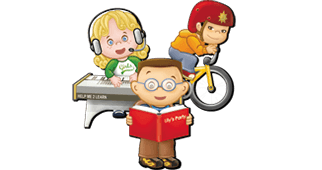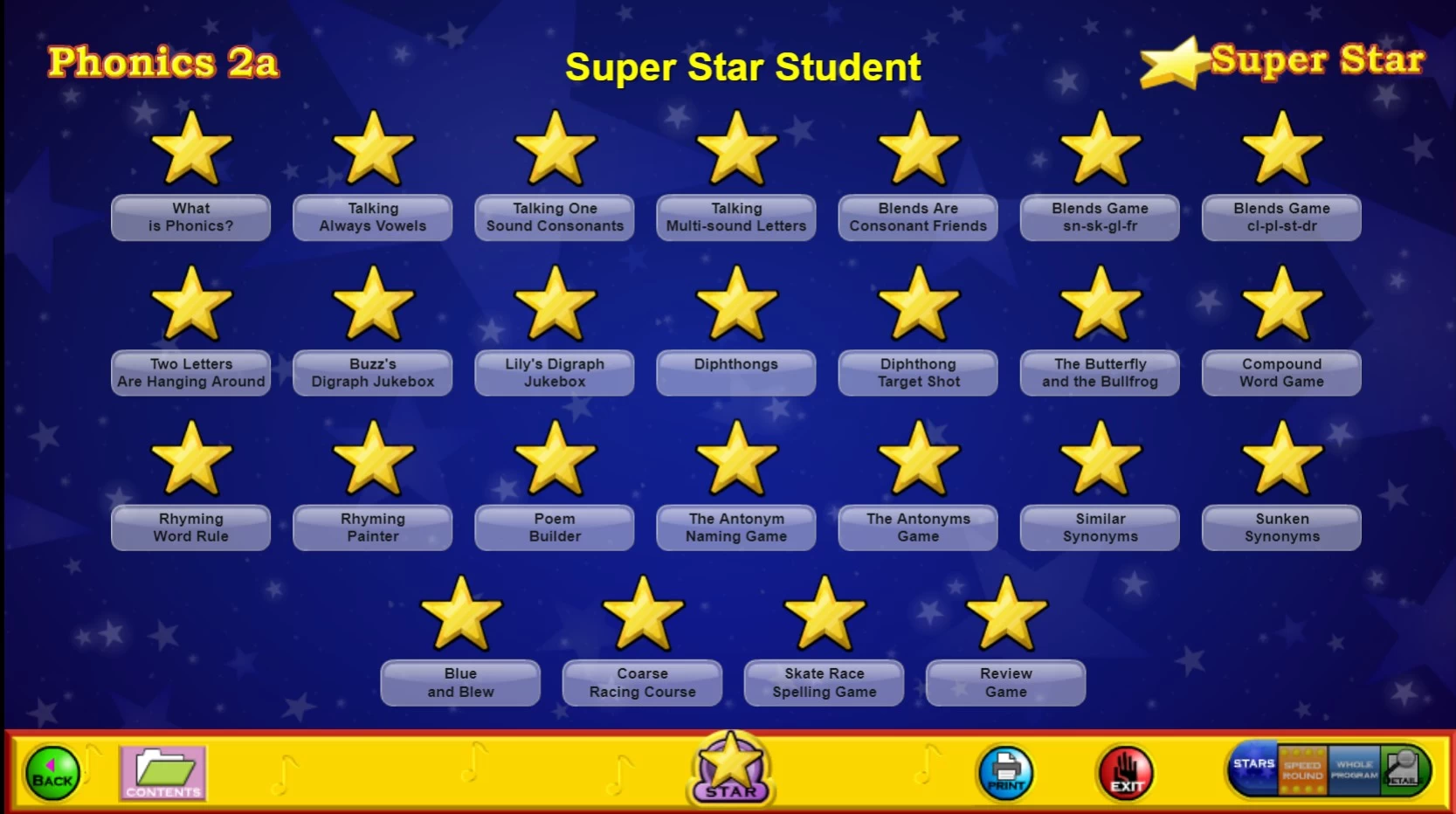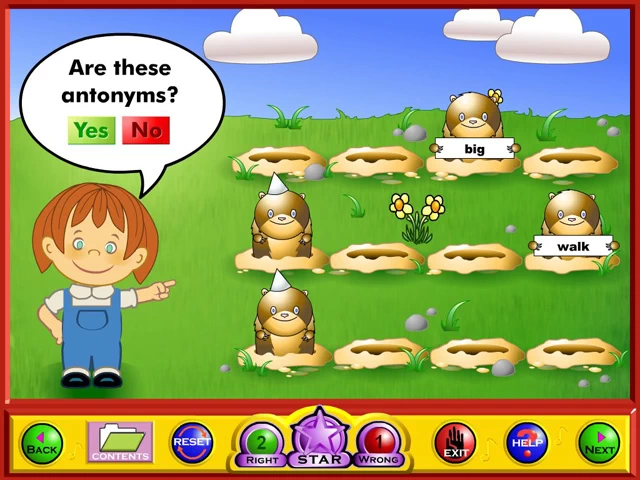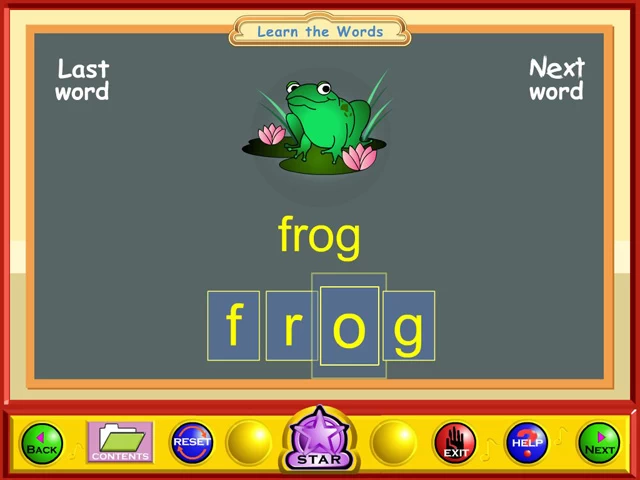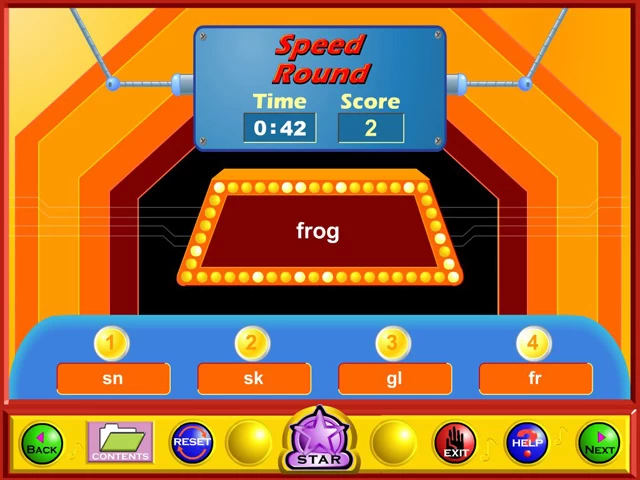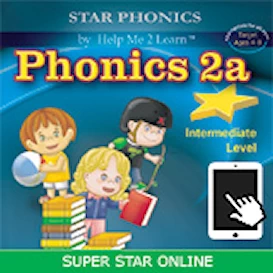
Phonics 2a - Intermediate Level
Introduction
Phonics 2a - Intermediate Level makes learning combination sound a finger-snapping experience with this musical multimedia course!
Phonics 2a is designed much like a book. Phonics 2a is the master course and contains all of the lessons of the course. However, a teacher can assign individual lessons to the students, to work on the specific skills those students need to work on. Each lesson is like a chapter in a book, and is much shorter than the master course. The lessons can be usually be completed in one setting. Students can earn a Gold Star Certificate of Achievement in each lesson and in the master course.
Program Features
Phonics 2a begins with a review of basic phonics concepts and sounds. The "Learn the Words" section helps the student see a picture of the word, see and hear the word, and then see and hear how the word is formed phonetically. Exciting and challenging spelling and review games give students a jump-start on reading and spelling.- The Super Star Motivational and Data Tracking system, encourages students to earn silver and gold stars by completing each song, activity, or game
- 8 karaoke style sing-a-long educational songs from Twin Sisters
- Over 8 hours of play and learning
- The "Super Star Kids" multi-cultural characters featured in animated lessons
- color activity print pages
- A Users' Guide and Lesson Plans along
- Our "Super Star Online" Learning Management System with optional Teacher Features
- Winner of the Children´s Software and New Media "All Star Award"
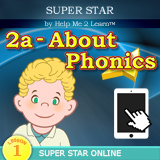
About Phonics
- Distinguish long from short vowel sounds in spoken single-syllable words.
- Recognize and read grade-appropriate irregularly spelled words.
- Decode regularly spelled one-syllable words.
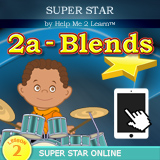
Consonant Blends sn, sk, gl, fr
Consonant Blends cl, pl, st, dr
- Orally produce single-syllable words by blending sounds (phonemes), including consonant blends.
- Isolate and pronounce initial, medial vowel, and final sounds (phonemes) in spoken single-syllable words.
- Segment spoken single-syllable words into their complete sequence of individual sounds (phonemes).
- Decode regularly spelled one-syllable words.
- Distinguish long and short vowels when reading regularly spelled single¬ syllable words.
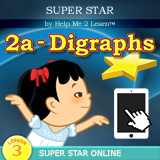
Digraphs
- Know the spelling-sound correspondence for common consonant digraphs.
- Decode regularly spelled one-syllable words.
- Isolate and pronounce initial, medial vowel, and final sounds (phonemes) in spoken single-syllable words.
- Segment spoken single-syllable words into their complete sequence of individual sounds (phonemes).
- Distinguish long and short vowels when reading regularly spelled single-syllable words.
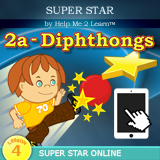
Diphthongs
- Decode regularly spelled one-syllable words.
- Isolate and pronounce initial, medial vowel, and final sounds (phonemes) in spoken single-syllable words.
- Segment spoken single-syllable words into their complete sequence of individual sounds (phonemes).
- Know spelling-sound correspondence for additional common vowel teams.
- Recognize and read grade-appropriate irregularly spelled words.
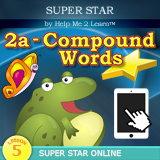
Compound Words
- Use knowledge of the meaning of individual words to predict the meaning of compound words.
- Decode two-syllable words following basic patterns by breaking the words into syllables.

Rhyming Words
- Recognize and produce rhyming words.
- Decode regularly spelled one-syllable words.
- Isolate and pronounce initial, medial vowel, and final sounds (phonemes) in spoken single-syllable words.
- Segment spoken single-syllable words into their complete sequence of individual sounds (phonemes).
- Distinguish long and short vowels when reading regularly spelled single-syllable words.
- Recognize and produce rhyming words.
- Decode regularly spelled one-syllable words.
- Isolate and pronounce initial, medial vowel, and final sounds (phonemes) in spoken single-syllable words.
- Segment spoken single-syllable words into their complete sequence of individual sounds (phonemes).
- Distinguish long and short vowels when reading regularly spelled single-syllable words.
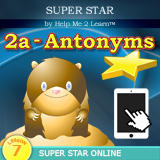
Antonyms
- Demonstrate understanding of frequently occurring verbs and adjectives by relating them to their opposites (antonyms).
- Decode regularly spelled one-syllable words.
- Isolate and pronounce initial, medial vowel, and final sounds (phonemes) in spoken single-syllable words.
- Segment spoken single-syllable words into their complete sequence of individual sounds (phonemes).
- Distinguish long and short vowels when reading regularly spelled single-syllable words.
- Demonstrate understanding of frequently occurring verbs and adjectives by relating them to their opposites (antonyms).
- Decode regularly spelled one-syllable words.
- Isolate and pronounce initial, medial vowel, and final sounds (phonemes) in spoken single-syllable words.
- Segment spoken single-syllable words into their complete sequence of individual sounds (phonemes).
- Distinguish long and short vowels when reading regularly spelled single-syllable words.
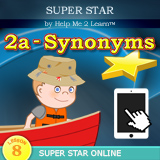
Synonyms
- Orally produce single-syllable words by blending sounds (phonemes), including consonant blends.
- Demonstrate understanding of words by relating them to their opposites (antonyms) and to words with similar but not identical meanings (synonyms).
- Know the spelling-sound correspondence for common consonant digraphs.
- Decode regularly spelled one-syllable words.
- Isolate and pronounce initial, medial vowel, and final sounds (phonemes) in spoken single-syllable words.
- Segment spoken single-syllable words into their complete sequence of individual sounds (phonemes).

Homonyms
- Decode regularly spelled one-syllable words.
- Isolate and pronounce initial, medial vowel, and final sounds (phonemes) in spoken single-syllable words.
- Segment spoken single-syllable words into their complete sequence of individual sounds (phonemes).
- Distinguish long and short vowels when reading regularly spelled single-syllable words.
tinguish long and short vowels when reading regularly spelled one-syllable words.
- Decode regularly spelled one-syllable words.
- Isolate and pronounce initial, medial vowel, and final sounds (phonemes) in spoken single-syllable words.
- Segment spoken single-syllable words into their complete sequence of individual sounds (phonemes).
- Distinguish long and short vowels when reading regularly spelled single-syllable words. tinguish long and short vowels when reading regularly spelled one-syllable words.
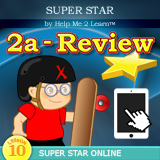
Review
- Use conventional spelling for words with common spelling patterns and for frequently occurring irregular words.
- Generalize learned spelling patterns when writing words.
- Recognize and read grade-appropriate irregularly spelled words.
- Decode regularly spelled one-syllable words.
- Isolate and pronounce initial, medial vowel, and final sounds (phonemes) in spoken single-syllable words.
- Segment spoken single-syllable words into their complete sequence of individual sounds (phonemes).
- Distinguish long and short vowels when reading regularly spelled single-syllable words.
- Know the spelling-sound correspondence for common consonant digraphs.
- Orally produce single-syllable words by blending sounds (phonemes), including consonant blends.
- Recognize and produce rhyming words.
- Use knowledge of the meaning of individual words to predict the meaning of compound words.
- Use conventional spelling for words with common spelling patterns and for frequently occurring irregular words.
- Generalize learned spelling patterns when writing words.
- Recognize and read grade-appropriate irregularly spelled words.
- Decode regularly spelled one-syllable words.
- Isolate and pronounce initial, medial vowel, and final sounds (phonemes) in spoken single-syllable words.
- Segment spoken single-syllable words into their complete sequence of individual sounds (phonemes).
- Distinguish long and short vowels when reading regularly spelled single-syllable words.
- Know the spelling-sound correspondence for common consonant digraphs.
- Orally produce single-syllable words by blending sounds (phonemes), including consonant blends.
- Recognize and produce rhyming words.
- Use knowledge of the meaning of individual words to predict the meaning of compound words.
More Resources (download .pdf)
Super Star Online: System Requirements
- Devices: Windows, Mac, Chromebook, Android, iPad/iPhone
- A broadband connection is highly recommended
Ordering: Super Star Online for Schools
- More Ordering Options
- Price: $5 per user, per year (25 users minimum).
- When ordering online, after you click on Add to Cart, update the quantity to include all the users in the subscription (25 minimum).
- All of our courses/lessons/games are included in any subscription
- Call or text 760-419-7216 for a written quote
